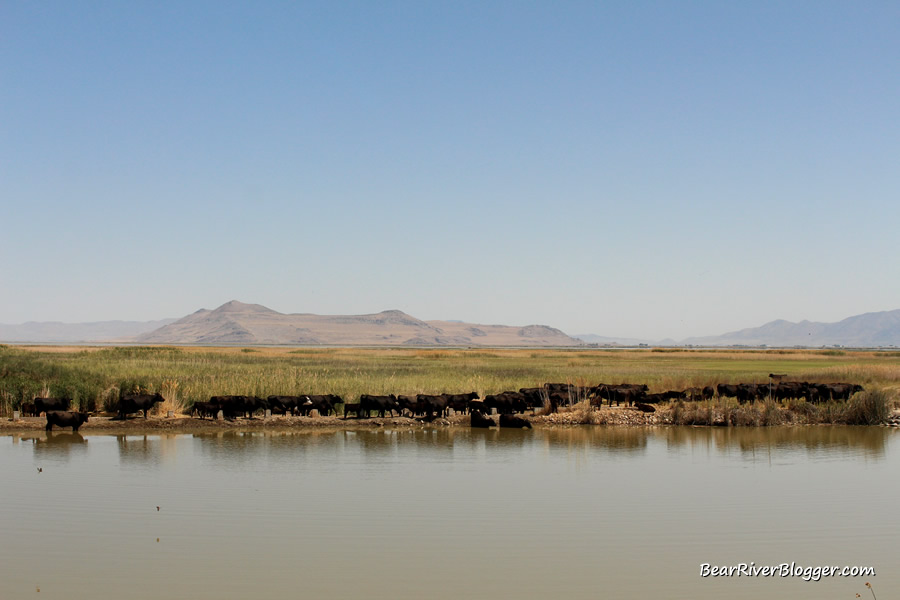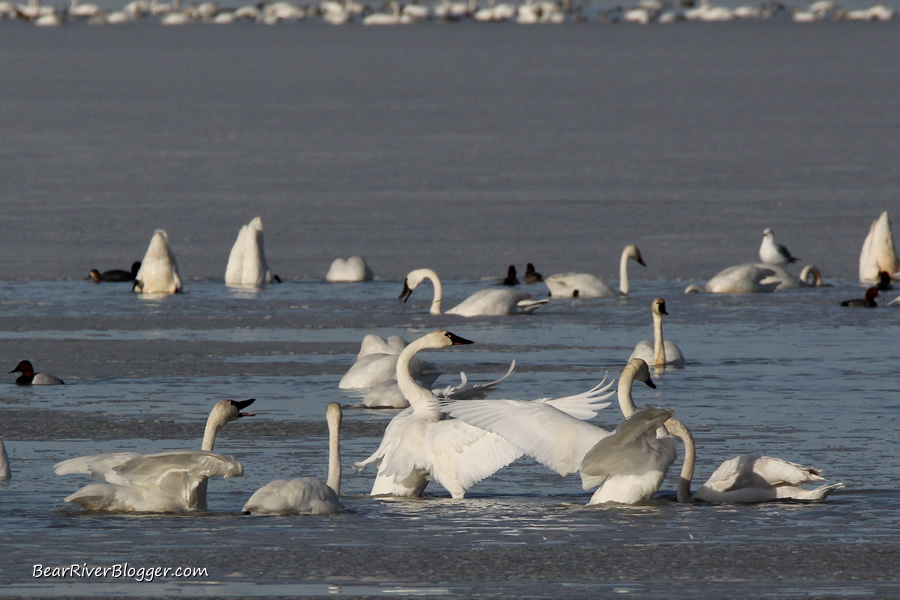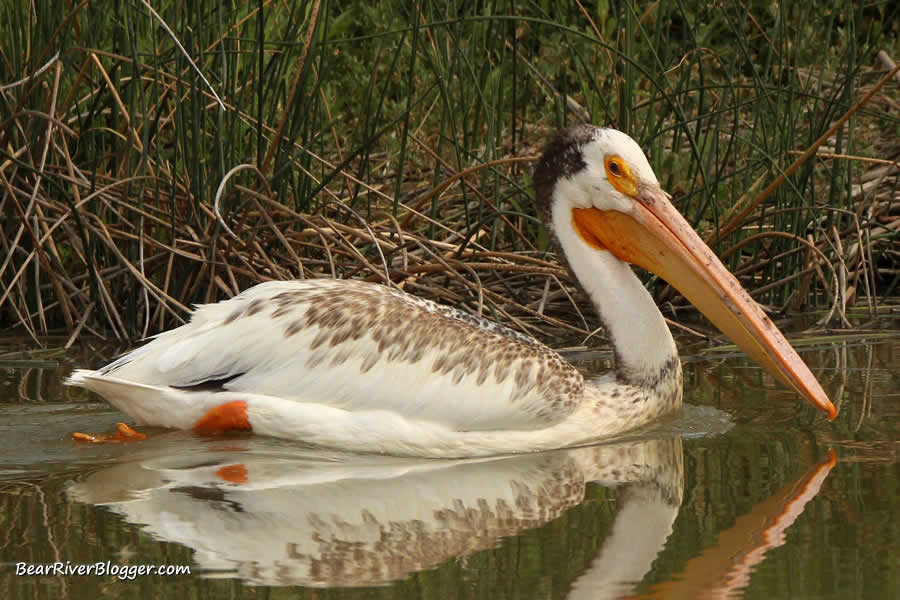If you’ve visited the Bear River Migratory Bird Refuge auto tour route recently this summer, you have most likely noticed and are wondering why cows are currently found on this federally protected bird sanctuary.
As a bird watcher myself, I admit at first thought it seems a bit odd to have cattle on a nature preserve.
Birders come from all over the country to view this natural wonder and to photograph the hundreds of species of birds and other creatures living on the refuge in a natural and serene environment.
But be rest assured, there is an important and biological reason for the cattle on the refuge that directly affects our beloved birds.
Cattle are placed on the Bear River Migratory Bird Refuge during the summer months as one part of the ongoing fight against phragmites, an unwanted and invasive wetland plant, otherwise known as common reed, that spreads quickly and can grow as high as eighteen feet.
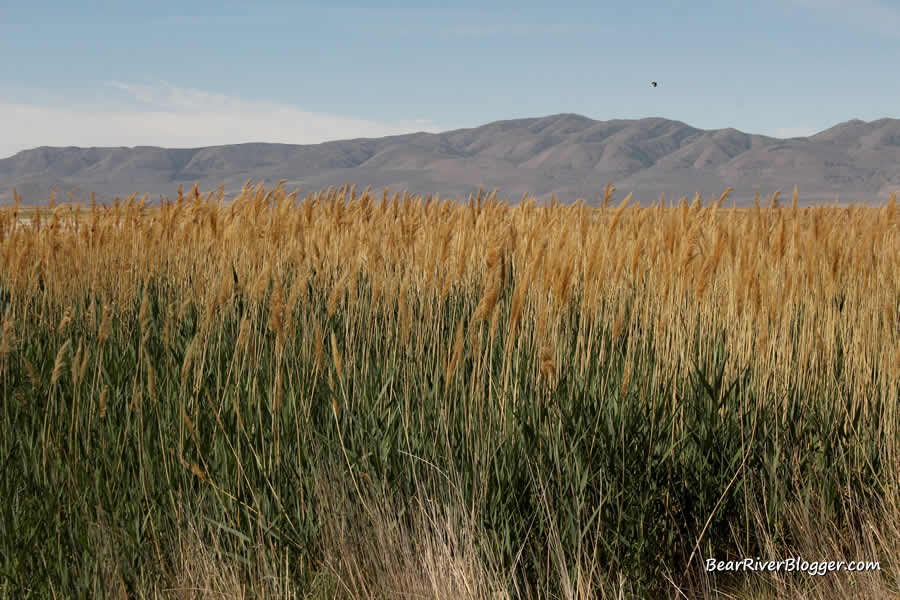
In short, phragmites spreading all over the refuge are literally displacing birds and robbing birders of the natural wetland ecosystem we come to view, photograph, and enjoy each year, and cattle are one of several methods being used by the refuge to reverse that trend.
Phragmites is a non-native and very aggressive wetland grass that has little to no food or nesting value for birds found on the Bear River Bird Refuge.
It is well known that phragmites spread and grow quickly, choking out beneficial native wetland vegetation, such as hardstem bulrush.
And as a result, it reduces the natural food and nesting habitat available for birds commonly found on the refuge.
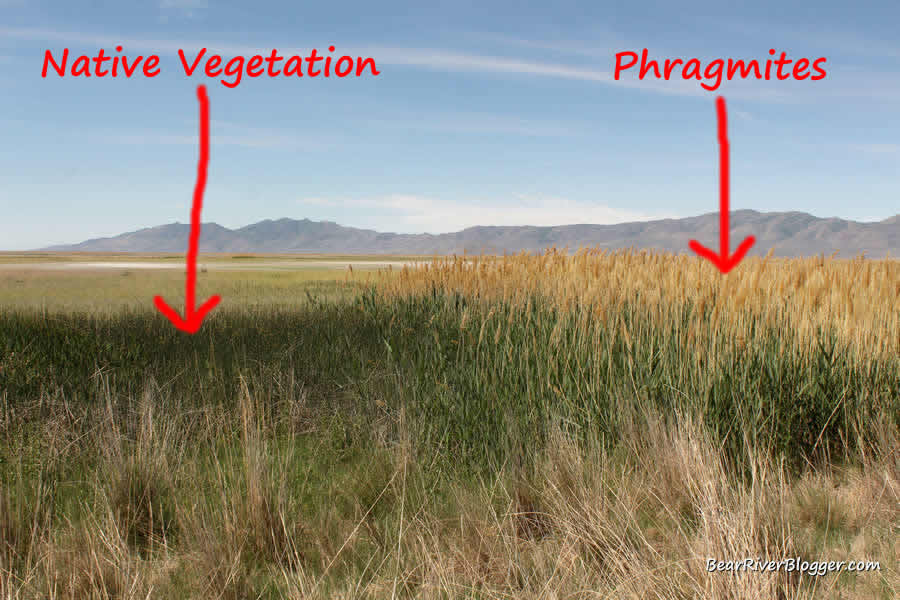
This, in turn, displaces and reduces the migratory and resident bird populations which utilize this 77,000-acre preserve for breeding and feeding purposes during various parts of the year.
If you have been noticing a downward trend with regards to birds on the Bear River Migratory Bird Refuge over the years, the large stands of phragmites popping up all around the refuge are one big reason why.
For several years now, the Bear River Migratory Bird Refuge has been stepping up its efforts to remove phragmites from the refuge, thus restoring the natural and native ecosystem that literally brings in millions of birds each year to the refuge.
So what do cattle have to do with the ongoing efforts of removing phragmites and restoring the natural habitat on the refuge?
Simple, cattle will eat the fresh green phragmites shoots, helping to curb its unwanted spread and growth on the refuge.

Phragmites spread very quickly, giving them the upper hand when competing with native vegetation for places to grow.
The Phragmites plant can spread by seed, rhizome (shallow horizontal underground roots), and by stolons (thin horizontal structures that grow from an existing stem just above the ground and sprout many new plants along its path).
In addition to eating the fresh green shoots, cattle are thought to help curb the rapid spread through stolons by stepping on, breaking, and disrupting these above-ground horizontal shoots.
It has been reported each stolon can grow dozens of feet annually and a new plant can start every few inches along its path, helping it spread and grow very quickly each year.
Being able to spread by these three methods, the phragmites is a very aggressive plant and is literally choking out native vegetation anywhere it gets a foothold and starts to spread.
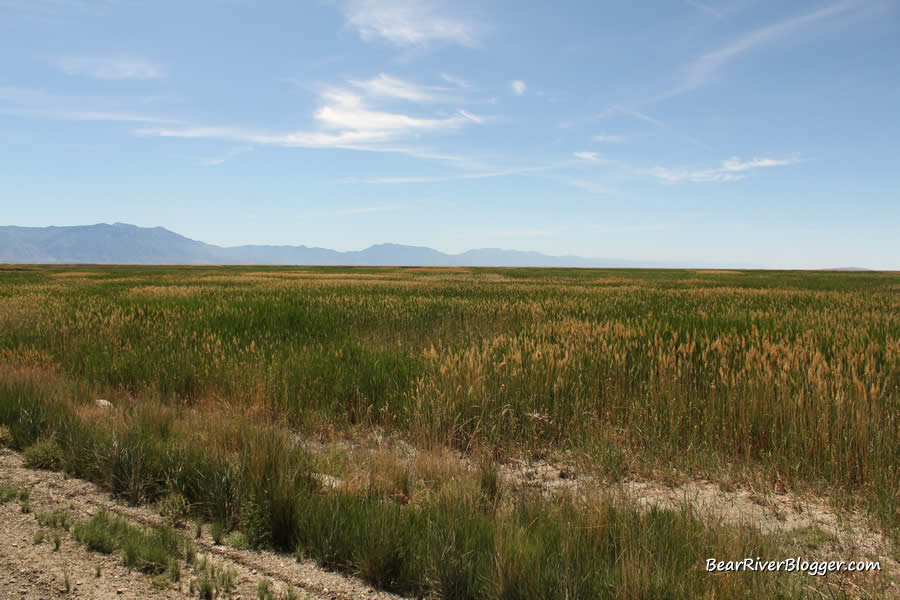
This phenomenon is not only occurring on the refuge itself but, unfortunately, all over the Great Salt Lake wetlands up and down the entire Wasatch Front as well.
Unfortunately, cows, by themselves, can’t stop the spread of phragmites, but they are one of several combined methods wildlife managers are using to fight this most unwanted plant.
Cattle grazing does help slow down the spread of phragmites.
Cows are quick to eat the green, tender emerging phragmites shoots, helping to slow the mostly unchecked growth and spread of this wetland grass.
Herbicides, controlled burning, and water management practices (typically drying out an area for grazing and burning) are the rest of the methods employed to help rid the Bear River Bird Refuge of this unwanted and invasive plant.
It takes all the above methods in one area for several years to get an upper hand on the unwanted spread and reduction of the phragmites and cattle are an important part of this eradication process.
If you have more questions about the phragmites and the ongoing efforts by the refuge to try and remove this invasive plant from the wetlands, please contact the refuge office directly with any questions you might have.
Subscribe
Feel free to subscribe to our blog for more information about the Bear River Migratory Bird Refuge from our own experiences and time spent on the refuge as well as other places in nature we find interesting and visit along the way.

